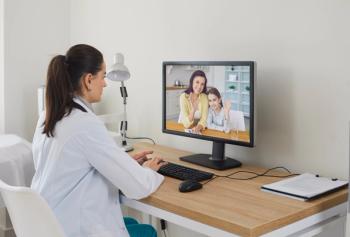
What 5 telehealth services have to offer
In the market for a telehealth service? Here's how 5 stack up.
In response to the COVID-19 pandemic, pediatricians have rapidly adopted telehealth (TH) to provide remote health care services for patients. Although state and federal emergency mandates permit temporary use of non-telehealth video applications such as Zoom, Skype, Facetime, and others for the duration of the pandemic, eventually medical practices will be limited to TH service providers if they plan to continue to provide virtual office visits. The COVID-19 crisis has established TH as an integral part of pediatric practice, one that can facilitate patient care, bring patients back to the medical home, and increase practice revenue at a time when pediatricians are recovering from dramatic pandemic- related revenue losses.
In order to satisfy Health Insurance Portability and Accountability Act requirements, a TH service encrypts video visit data to safeguard protected health information and protects data during transfer and storage. All TH service vendors must provide medical practices with a Business Associates Agreement (BAA), detailing how the vendor is responsible for preventing and remedying data breaches. Click
The quality of virtual visits is affected by bandwidth limitations (ie, high-speed vs low-speed, internet vs cellular network connectivity), computer or smart device configuration issues, as well as a patient’s or a provider’s technical acumen. In my view, establishing a virtual visit should be as quick and easy as launching and receiving a FaceTime call! Telehealth services vary in cost, and some are application-based or browser-based or both. Some TH companies sell a comprehensive “clinic” TH platform, that includes scheduling by office staff, a virtual waiting room, acceptance of payments, file sharing, and the ability to document visits within the TH portal or application itself. Telehealth services with more capabilities are more expensive but many of the more sophisticated services are more time consuming (and often complicated) to use from the perspective of staff, provider and patient. This is why I encourage pediatricians to utilize TH services that are easiest to implement! Many pediatricians already use bloated Electronic Healthcare Record programs (EHR) that require too many clicks to schedule and document visits. One doesn’t necessarily need 2 systems with overlapping features.
I have selected 5 TH platforms (Table) among many dozens available, as premium products worth your consideration, and will briefly contrast and compare these to help guide your adoption decision.
By far my favorite TH application is the Dialer Video included in the free Doximity Smartphone Application. Doximity provides a BAA to all registered users, and each provider can assign up to 20 team members to facilitate visits. One sends a text message via the smartphone application to a patient’s mobile phone and launches the visit by clicking a button in the application. This launches a browser window on your smartphone. The patient clicks on a link embedded in the message and joins the visit. One provides a caller ID to display on the recipient’s phone, so patients/parents see your office number rather than your own smartphone phone number. The video visit quality is excellent, and it is an easy matter to communicate with the patient on your phone while reviewing the EHR record on your computer screen. Best of all, the application is free and requires very few “clicks” to initiate a video visit. Doximity has a desktop version that is now in beta.
My second choice is Doxy.me (no relation to Doximity), which provides a free low definition video service that may be adequate for many practices. A BAA is included in the free version. For $35 per provider per month you can upgrade to Doxy.me’s high definition video visit system. It operates via a browser-based portal on your computer, smartphone, or tablet. Patients are invited through a text link sent via email or text message. The user clicks on the link to enter a waiting queue. The provider can see all waiting patients and clicks on a button to initiate the virtual visit. If practices are interested, Doxy.me has a clinic version available for $50 per provider plus a $300 setup fee.
My third choice is Zoom for Healthcare. Zoom is application-based and can be used on smart devices as well as computers. Zoom is extremely easy to use, and one merely initiates a visit by sending a link via email or messaging. Zoom for Healthcare provides a BAA to users, integrates a “virtual waiting room,” and one can record virtual visits for review at a later time. The downside of Zoom for Healthcare is that it costs $200 per month (for 10 users), and unfortunately there is no pricing for fewer users. If you have a small office, this is still a reasonable price, and you can assign your nursing and front office staff as users so they can communicate with patients via video, which makes patient communication more effective.
Lastly, if despite my admonitions you’d like to implement a “clinic” based TH system, consider Vsee or SnapMD. Vsee offers a Messenger service, similar to Doxy.me, that includes a BAA for $49 per month per user (a free version does not include a BAA), but this is the same price as its clinic TH system. SnapMD has been endorsed by the American Academy of Pediatrics (AAP) and waives the setup fee as well as offers substantial discounts for AAP members. Both Vsee and SnapMD include the comprehensive features presented above.
Good luck with your adoption and implementation of your TH service. Please send your questions and comments to me at
Newsletter
Access practical, evidence-based guidance to support better care for our youngest patients. Join our email list for the latest clinical updates.








